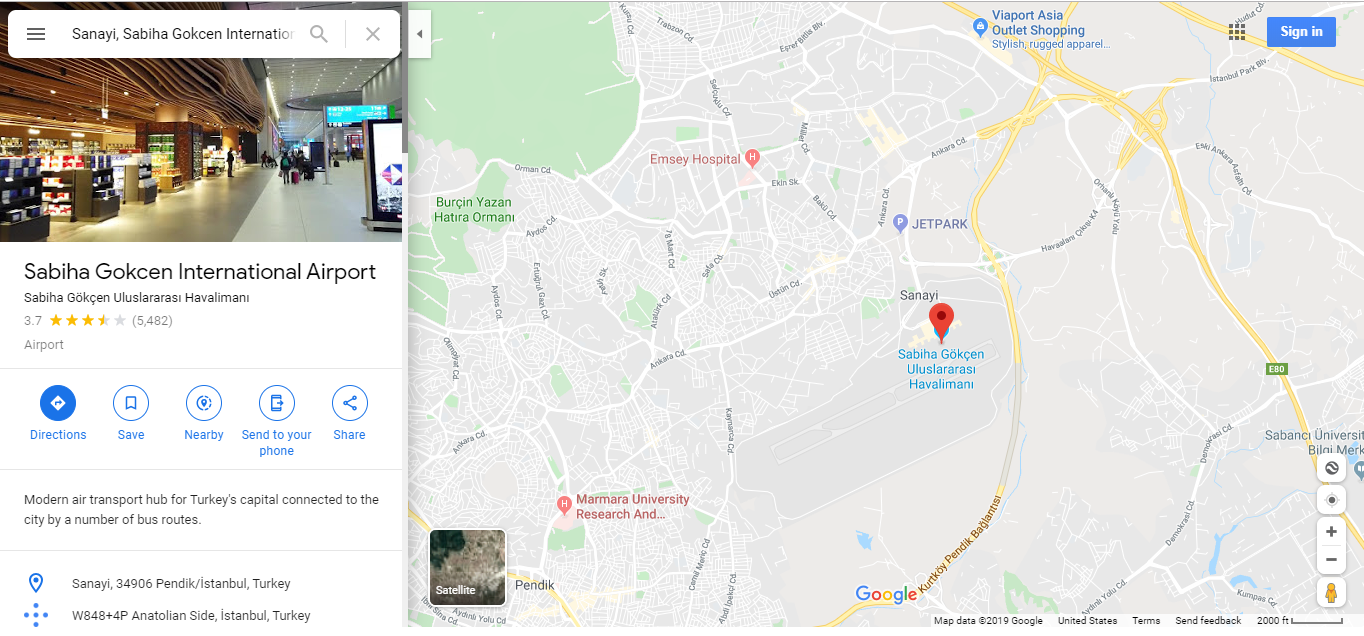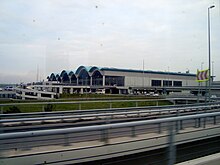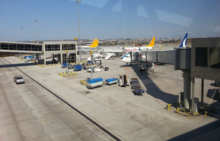
If you’re planning a trip to Istanbul, don’t leave your airport transportation up to chance. When you book a shuttle ahead of time, you can skip the stress and start your vacation off right.
We provide safe and comfortable transfer Sabiha Gokcen Airport SAW to any location in Turkey. Istanbul Airports transfers provided by Istanbul Elite Transfer are unlike any typical Istanbul taxi or shuttle services. Using a taxi service, it is highly possible that you will find the taxi unclean, uncomfortable, unsafe and with expensive prices. Our operational philosophy is to provide safe and comfortable transfer without having any hidden costs. We do not charge any additional payment due to flight delay or traffic congestion. It is also diffucult and exhausting to get to any location by metro, by airport shuttles or by any other public transportations. Using our services will make your stay comfortable and will guarantee your piece of mind.
At IstanbulEliteTransfer, we offer a variety of flexible transportation options for Sabiha Gokcen Airport SAW, so you can ride your way. If you need any ride in Istanbul you can count on, we can help.
We are ready to shuttle you to where you want to go. From Hotel to Airport, from Sea Port to Hotel. Book a valuable transportation service today.
About Sabiha Gokcen Airport SAW
Istanbul Sabiha Gökçen International Airport (IATA: SAW, ICAO: LTFJ) (Turkish: İstanbul Sabiha Gökçen Uluslararası Havalimanı) is one of two international airports serving Istanbul, the largest city in Turkey. Located 32 km (20 mi) southeast[1] of the city center, Sabiha Gökçen Airport is in the Asian part of the bi-continental Istanbul and serves as the hub for some airlines, including Pegasus Airlines as well as a secondary base for Turkish Airlines and Borajet (currently suspended). The facility is named after Sabiha Gökçen, adoptive daughter of Mustafa Kemal Atatürk and the first female fighter pilot in the world.[3] Although Istanbul Airport, located 63 km (39 mi) away on the European side of Istanbul, is larger, Sabiha Gökçen is still one of the largest airports in the country.
Overview
The airport was built because Atatürk International Airport (located on the European side) was not large enough to meet the booming passenger demands (both domestic and international). The airport opened on 8th January 2001. In June 2007, Turkish conglomerate Limak Holding, India’s GMR Group and Malaysia Airport Holding Berhad (MAHB) consortium gained the contract for upgrading and maintaining the airport. In mid-2008, ground was broken to upgrade the international terminal to handle 25 million passengers annually. The new terminal was inaugurated on 31 October 2009.
SAW’s international terminal capacity originally was 3 million passengers per year and the domestic terminal capacity was 0.5 million passengers per year. In 2010, Sabiha Gökçen airport handled 11,129,472 passengers, a 71% increase compared to 2009.[4] The airport was planning (in 2011) to host 25 million passengers by 2023,[5][6] but had already handled more than 31 million passengers by 2017.
In September 2010, the airport was voted the World’s Best Airport at the World Low Cost Airlines Congress in London and received the award.[7] The other awards received by the airport in 2010 were: Turkey’s Most Successful Tourism Investment 2010, the highly commended award from Routes Europe, and the Airport Traffic Growth Award by Airline News & Network Analysis web site anna.aero.[8]
With 28,285,578 passengers and 206,180 aircraft movements in 2015, Sabiha Gökçen International Airport is the third busiest single-runway airport in the world, after Mumbai and London Gatwick. However, both Mumbai and Gatwick actually have two runways and are only considered «single-runway» because they can only operate the second runway if the main one is out of use. This makes Sabiha Gökçen the world’s busiest true single-runway airport.[9]
A second runway is currently being built and is expected to be operational in June 2019.[10] The second runway will increase the hourly capacity from 40 to 80 movements. After the second runway is built, Lindbergh Field in San Diego will be the busiest true single runway airport in the world.
Terminals
The new terminal building with a 25 million annual passenger capacity conducts domestic and international flights under one roof.
The features and services of the new terminal and its outlying buildings include:
- a four-storey car park with a capacity of about 4,718 vehicles + 72 bus (3.836 indoors and 882 + 72 bus outdoors).
- a four-storey hotel with 128 rooms, adjacent to the terminal and with separate entrances at air and ground sides.
- 112 check-in, 24 online check-in counters
- a VIP building & apron viewing CIP halls with business lounges
- Multi Aircraft Ramp System (MARS), allowing simultaneous service to 8 aircraft with large fuselages (IATA code E) or 16 middle-sized fuselage aircraft (IATA code C).
- a 400 m² conference center
- 5,000 m² food court, for cafés and restaurants belonging the leading food & beverage brands
- a duty-free shopping area, with a ground of 4,500 square-meters; with shops at international standards.
The airport’s cargo terminal has a capacity of 90,000 tons per year and is equipped with 18 cold storage depots.
Traffic figures
| Year | Domestic | % change | International | % change | Total | % change |
|---|---|---|---|---|---|---|
| 2019 (Jan-Sep) | 16.216.567 | 10.432.123 | 26.648.690 | |||
| 2018 | 22,514,048 | 11,619,569 | 34,133,617 | |||
| 2017 | 21,056,767 | 10,329,074 | 31,385,841 | |||
| 2016 | 20,131,365 | 9,446,370 | 29,577,735 | |||
| 2015 | 18,535,463 | 9,576,975 | 28,108,738 | |||
| 2014 | 15,008,600 | 8,499,541 | 23,508,141 | |||
| 2013 | 11,947,424 | 6,694,418 | 18,641,842 | |||
| 2012 | 9,486,469 | 5,000,773 | 14,487,242 | |||
| 2011 | 8,704,249 | 4,420,421 | 13,124,670 | |||
| 2010 | 7,435,158 | 3,694,314 | 11,129,472 | |||
| 2009 | 4,547,673 | 2,092,285 | 6,639,958 | |||
| 2008 | 2,764,856 | 1,516,337 | 4,281,193 | |||
| 2007 | 2,528,549 | 1,191,946 | 3,720,495 | |||
| 2006 | 2,153,561 | 762,893 | 2,916,454 | |||
| 2005 | 559,824 | 459,922 | 1,019,746 | |||
| 2004 | 10,323 | 235,278 | 245,601 | |||
| 2003 | 2,826 | – | 154,346 | – | 157,172 | – |
Passenger development
|
|









